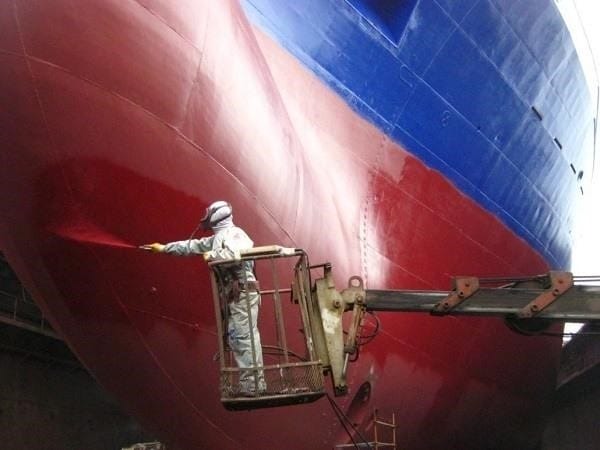Introduction
Ships are constantly exposed to harsh marine environments, making them vulnerable to biofouling— the accumulation of marine organisms like algae, barnacles, and mollusks on their hulls. This growth increases drag, reduces fuel efficiency, and accelerates hull corrosion. Anti-fouling paint is the primary defense against this problem, helping ships stay efficient, fuel-saving, and long-lasting. But how does it work? Let’s dive into the science behind anti-fouling coatings and why they are critical for marine engineering.
What is Anti-Fouling Paint?
Anti-fouling paint is a specialized marine coating applied to a ship’s hull to prevent the growth of organisms. It contains biocides, slippery surfaces, or advanced non-toxic technologies that either kill or discourage marine life from attaching.
These paints serve three main purposes:
✅ Reduce Drag: A clean hull improves hydrodynamics, making ships move smoothly through water.
✅ Improve Fuel Efficiency: Less friction means ships burn less fuel, cutting operational costs.
✅ Extend Ship Lifespan: Biofouling can damage hull materials over time. Anti-fouling paint prevents corrosion and degradation.
How Anti-Fouling Paint Works
There are different types of anti-fouling paints, each working through different mechanisms:
1. Self-Polishing Copolymer (SPC) Paints
🔹 How it Works: These paints slowly wear away over time, continuously exposing fresh biocide layers that prevent marine growth.
🔹 Common Ingredients: Copper-based biocides, zinc pyrithione.
🔹 Usage: Large commercial ships and military vessels due to their long-term effectiveness.
2. Hard Matrix Anti-Fouling Paints
🔹 How it Works: The paint doesn’t wear off easily but releases biocides at a controlled rate.
🔹 Common Ingredients: Copper oxides, organic biocides.
🔹 Usage: Best for ships that remain stationary for long periods, like oil tankers and cargo ships.
3. Foul-Release Coatings (Non-Toxic Alternative)
🔹 How it Works: Instead of using biocides, these coatings create a super-smooth surface that prevents organisms from sticking.
🔹 Common Ingredients: Silicone, Teflon-based polymers.
🔹 Usage: Used for eco-friendly applications and vessels in environmentally regulated waters.
Why Is Anti-Fouling Important for Ships?
🚢 1. Improves Fuel Efficiency
A fouled hull increases resistance, forcing the ship to use more power to maintain speed. Studies show that biofouling can increase fuel consumption by up to 40%! Anti-fouling paints help ships glide smoothly, reducing fuel costs and carbon emissions.
🔧 2. Reduces Maintenance Costs
Without anti-fouling paint, ships require frequent dry-docking to remove biofouling manually. This is expensive and time-consuming. Proper coatings can extend maintenance intervals, saving money.
🌊 3. Prevents Invasive Species Spread
When ships travel between ports, biofouling can transport invasive species, harming marine ecosystems. Anti-fouling coatings prevent organisms from hitching a ride, protecting biodiversity.
The Future of Anti-Fouling Technology
🔬 1. Nanotechnology-Based Coatings: Scientists are developing nano-coatings that create ultra-smooth, non-stick surfaces to prevent fouling without harmful chemicals.
🌱 2. Bio-Based Anti-Fouling Solutions: Using natural extracts from seaweed and bacteria, researchers are working on eco-friendly, biodegradable coatings.
⚡ 3. Electric Anti-Fouling: Some new ship designs use mild electric currents to repel marine organisms, reducing the need for toxic coatings.
Conclusion
Anti-fouling paints are an essential part of marine engineering, keeping ships efficient, cost-effective, and environmentally responsible. As new innovations emerge, the shipping industry is moving toward more sustainable and effective anti-fouling technologies. Whether it’s through biocidal coatings, foul-release polymers, or futuristic nano-tech solutions, the battle against biofouling continues to shape the future of marine transportation.


